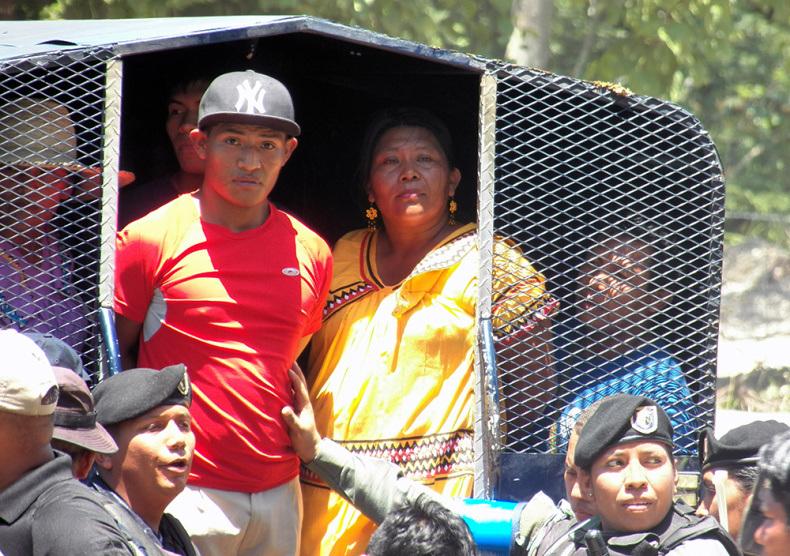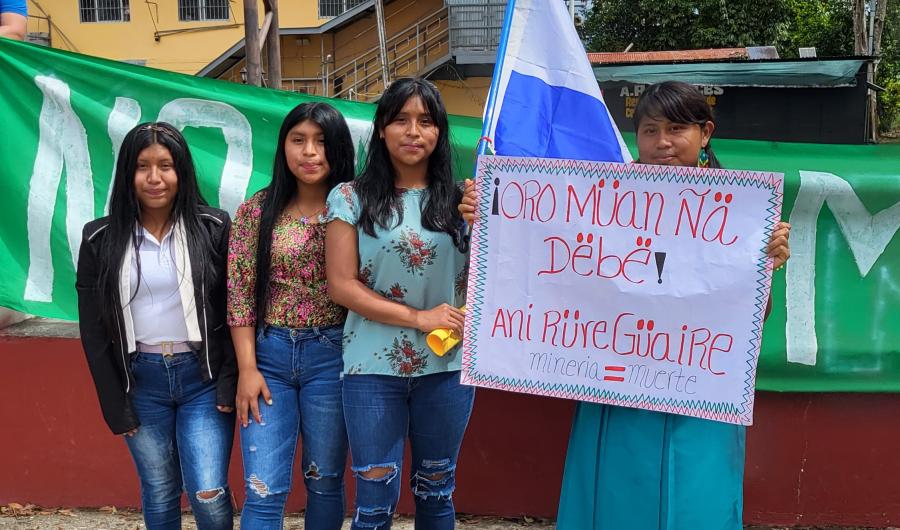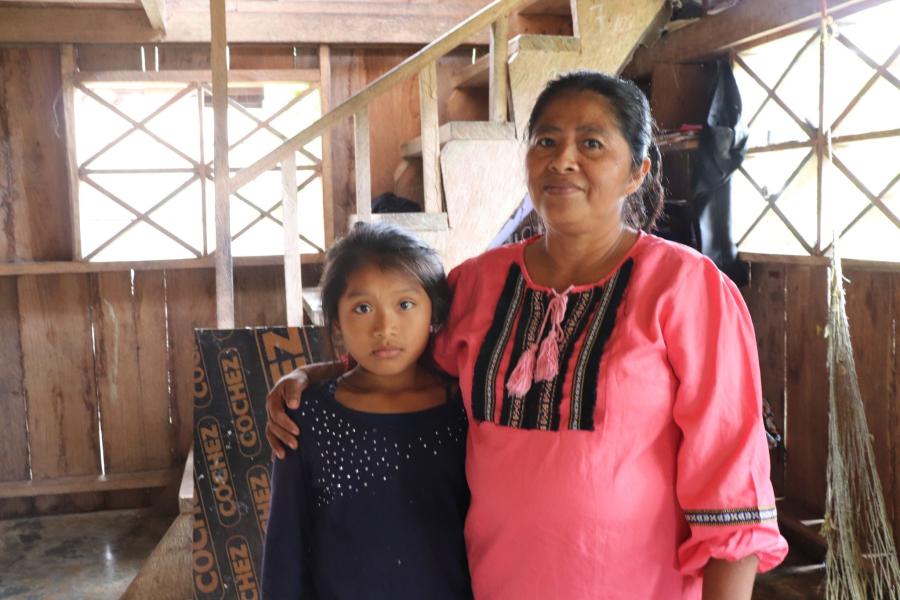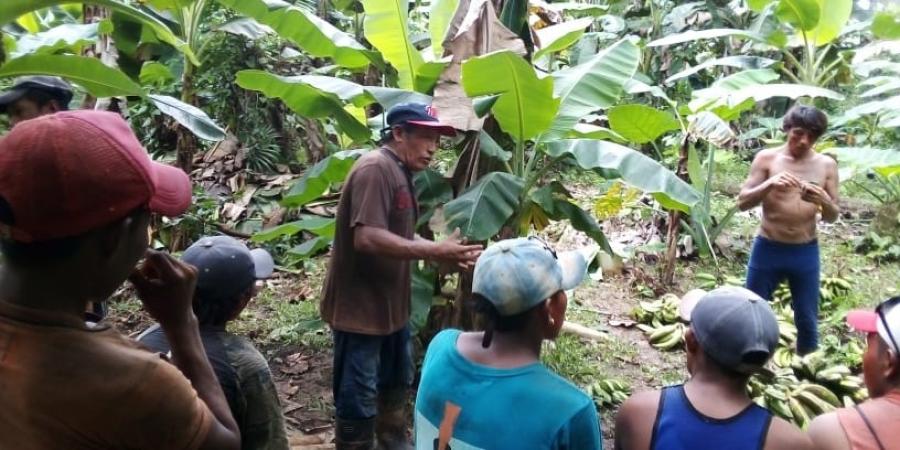
Reposted from Intercontinental Cry
By Richard Arghiris
Protests against the Barro Blanco hydro dam in western Panama turned violent last Saturday, July 25, when riot police, claiming to act in self-defense, unleashed pepper spray and batons on some 50 Ngäbe activists, women and children among them. At least three protesters were badly injured in the clash.
The crackdown occurred during a visit to the area by the Panamanian Vice President Isabel Saint Malo, who, under the pretext of dialogue, convened three Ngäbe leaders behind closed doors at the Centro Misionero (Mission Centre) in the town of Tolé. Despite a reasonable request to be included in the meeting, leaders from local community groups were excluded. Activists responded to Saint Malo’s move by blockading the Carretera Interamericana, the country’s principle highway.
According to the Ngäbe, at around 10:15 am, in scenes reminiscent of the Martinelli years, the police reacted violently to disperse the 50-strong protesters, destroying their equipment, trashing their camps, and burning their banners.
The police deny improper use of force.
Many fled the scene before 20 people were arrested (including several minors) and dispatched to the city of Santiago for processing.
While in the private meeting with Saint Malo, the Cacique of Muná, Chito Gallardo, and the Mayor of Muná, Rolando Carpintero, learned of the arrests and quickly intervened to have them returned. The injured were soon taken to the Casa Misionero for treatment and for the Vice President to bear witness.
According to one person at the scene, the vice president appeared coolly uninterested.
For several weeks, hundreds of police units have been stationed in and around Tolé, including numerous SENAFRONT troops, an elite militarized squad funded in part by the United States. SENAFRONT is normally charged with defending the jungle frontier with Colombia, making their presence of considerable significance.
Under the US Leahy Law on Human Rights, the US Department of State is prohibited from providing military assistance to foreign units who violate human rights with impunity.
The clashes on the Interamericana foreshadow greater unrest as Barro Blanco’s owner, Generadora del Istmo (GENISA) – a corporation owned by the controversial Kafie family, now mired in a high-level corruption scandal in Honduras – scrambles to complete the final 5-10% of the hydro dam’s construction.
The company has never sought the free, informed, and prior consent of the indigenous communities living on the banks of the Tabasará river, while the project’s funders, the Dutch and German investment banks FMO and DFE, admit to failing their own due diligence tests. Unfortunately, all funds have now been dispensed to GENISA and the banks themselves made a point of threatening the government when it suspended the project earlier this year.
The negative impacts of Barro Blanco have been identified by scores of technical teams, independent experts, international observers, and the United Nations. Those same impacts are nowhere to be found in GENISA’s Environmental Impact Assessment. Among them, the dam will displace several indigenous and campesino communities, including the community of Kiad, where a unique school and cultural centre is developing the written script of the Ngäbere language.
Additional impacts include the loss of farm plots and fish stocks -- vital sources of sustenance for indigenous and campesino communities in the region – as well as the loss of several ancient petroglyphs, part of Panama’s national patrimony and a special significance to the Mama Tata religion, a Ngäbe revivalist movement that syncretises indigenous animism and Catholicism.
Among the most devout followers of Mama Tata are the M22 resistance movement, who successfully blockaded the entrance to the dam for 38 consecutive days – until just ten days ago. International news footage of the groups praying and dancing on the highway may have influenced the government’s decision to enforce a ‘soft’ take-over of the site entrance. In contrast to the force deployed outside Tolé, Ngäbe women lying in the path of machinery were carefully removed.
Construction of the dam has now resumed and M22 are continuing to pray day and night by the highway. They complain of psychological intimidation with the police shining high intensity lamps on their camp during the night and aggressively entering the temple they have built near the river banks.
For his part, Panamanian President Varela, who continues to talk condescendingly about giving the Ngäbe ‘the keys to the dam’ upon its completion, appears to have acquiesced to pressures from his own business community, tacitly enabling foreign corporations who respect neither the environment nor international law nor indigenous or human rights.
The Supreme Court has cheered him on by annulling a moratorium on hydro projects passed by the environment agency, ANAM, who were concerned with the stress being placed on Panama’s delicate but biologically rich watersheds. With the crackdown last week, the Panamanian government appears officially back to business as usual.
Photo: Leader Weni Bagama (right) was among those arrested. Photo by Oscar Sogandares.



